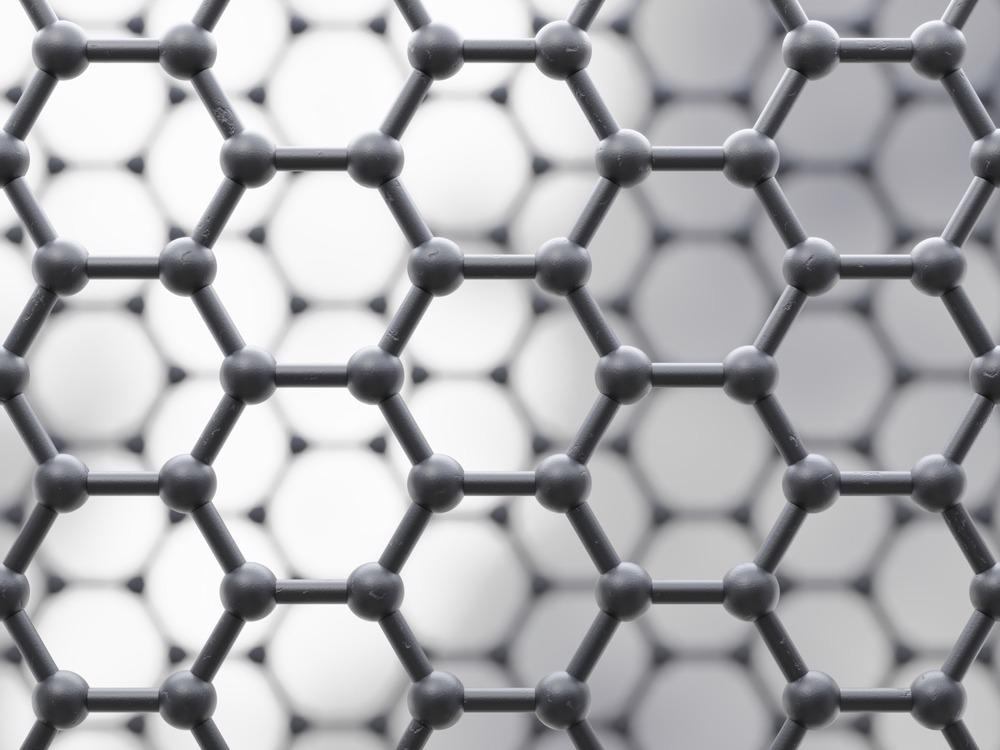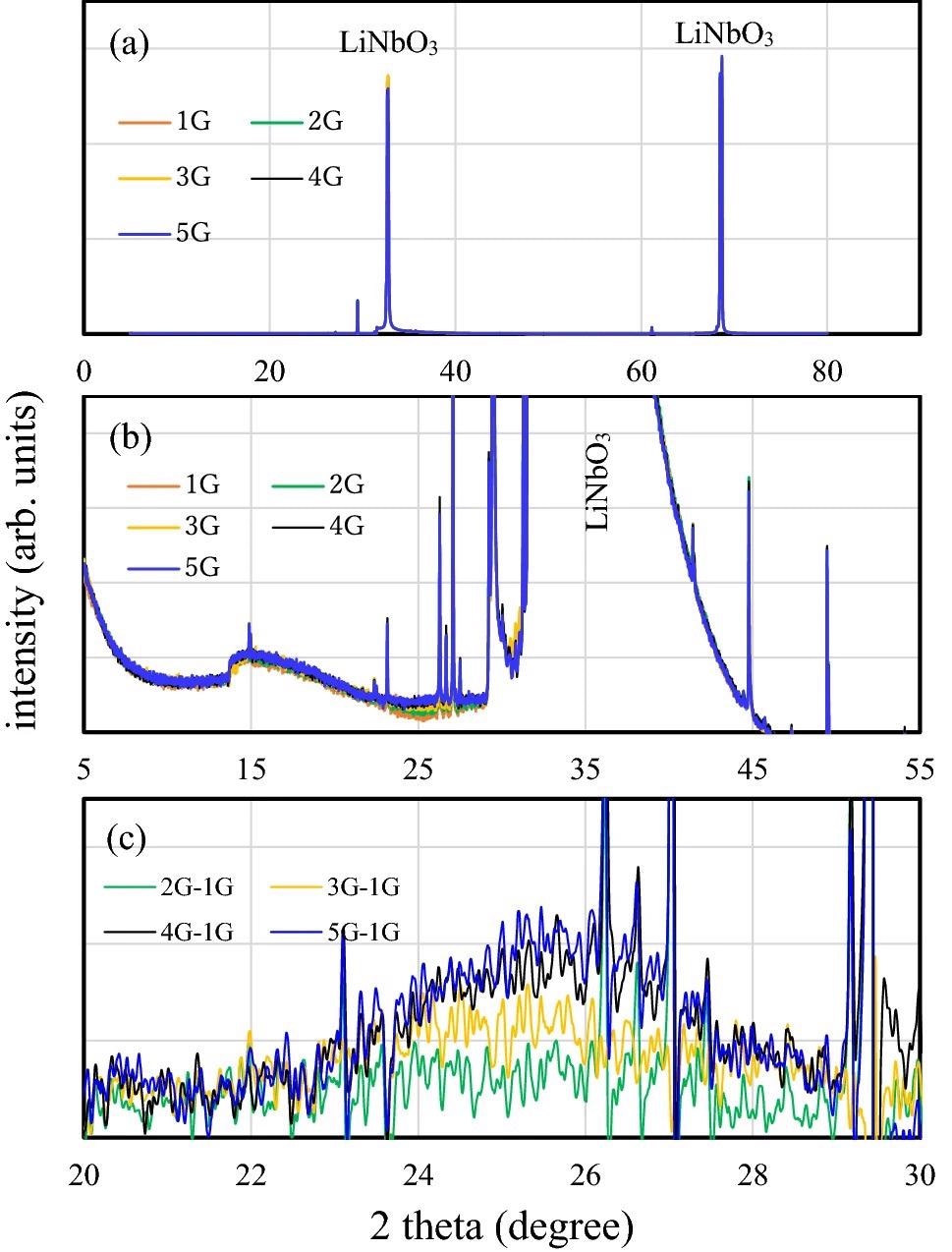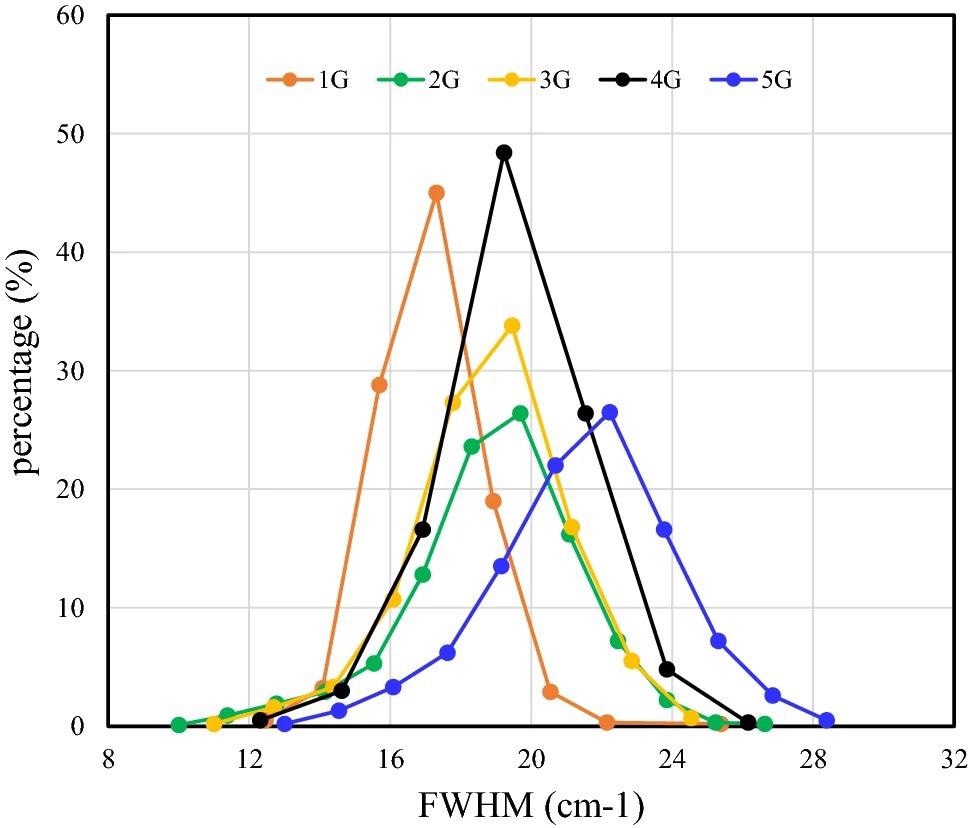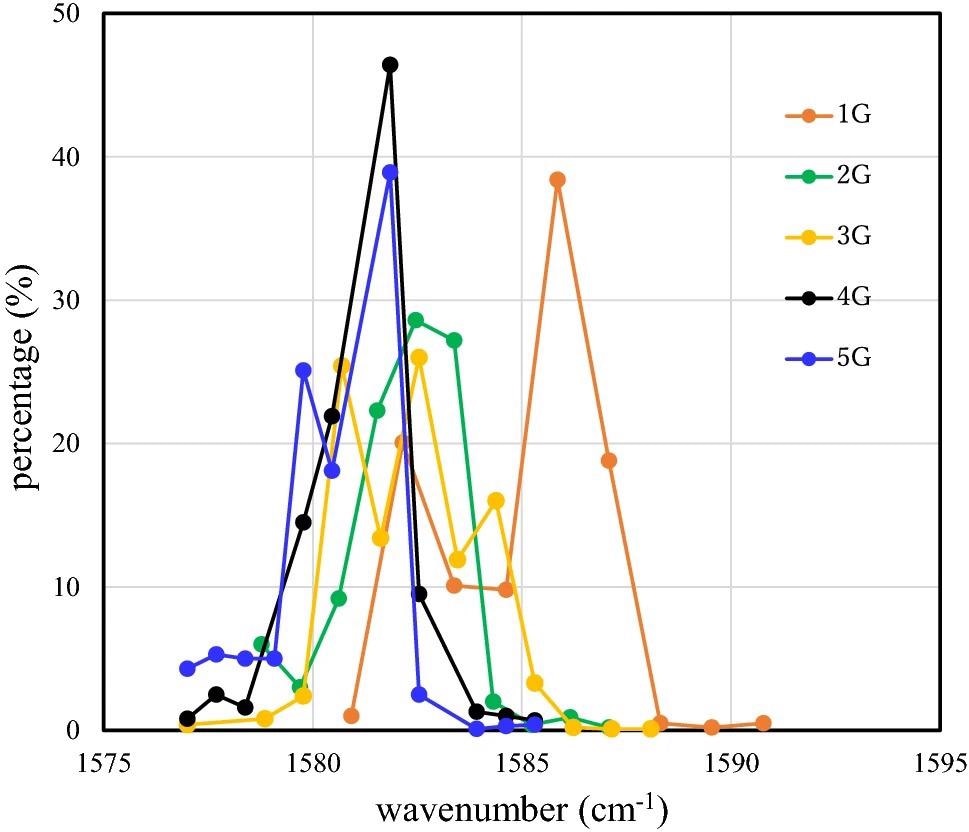In a recent study published in the journal Scientific Reports, researchers from Japan studied the thermodynamic properties of graphene stacked on LiNbO3 crystal by the application of surface acoustic waves (SAW).

Study: Possible pair-graphene structures govern the thermodynamic properties of arbitrarily stacked few-layer graphene. Image Credit: NEW-LIGHT-VISUALS/Shutterstock.com
Graphene’s Defects and Thermodynamics
Graphene is a promising 2D material used for electronic devices and industrial applications. Graphene layers must be grown on a catalyst substrate (nickel or copper foil), followed by the transfer of the graphene layer to a substrate to fabricate electronic devices. Crystal defects such as one-dimensional dislocations grain boundaries, point defects, and wrinkles develop in graphene during the transfer process.
Defects can develop during growth due to crystal defects in the catalyst substrate and substantial temperature fluctuations in the catalyst substrate. Defects generated during the transfer process (ripples) occur at room temperature due to deformation of the graphene layer and stress injection.
Due to these reasons, perfect or defect-free graphene layers have yet to be developed. Hence it is critical to understand the impact of imperfections on the thermal expansion coefficient (TEC) of a graphene layer.

(a) X-ray diffraction patterns of mono-, bi-, tri-, tetra-, and penta-layer graphene/LiNbO3 structures with 2θ between 5° and 85°. (b) An enlarged view of the X-ray diffraction patterns of mono-, bi-, tri-, tetra-, and penta-layer graphene/LiNbO3 structures with 2θ between 5° and 55°. (c) Differences between the diffraction intensities of bi-, tri-, tetra-, and penta-layers and those of mono-layer sample with 2θ between 20° and 30°. Image Credit: Sun, Y et al., Scientific Reports
In the present study, the researchers explored the thermodynamic properties of deformed few-layer graphene by examining the propagation frequencies, velocities, and attenuation characteristics of SAWs that went through the graphene layers.
Methodology
At ambient temperature and under atmospheric conditions, graphene layers were transferred layer by layer onto the surfaces of LiNbO3 crystals. The graphene layers were slacked in an incommensurate manner additionally and attempts were made so that there is no crystallographic correlation between them is developed.
Interdigital transducer (IDT) electrodes on the surface of a Y-cut LiNbO3 crystal (128 degrees with dimensions of 10x30x0.5 mm3) were used to produce and receive SAWs. The SAW device's fundamental frequency was 50 MHz. At room temperature, graphene films with mono-, bi-, tri-, tetra-, and penta-layers were deposited onto the surfaces of the SAW devices.
Further, a graphene/LiNbO3 sample was put in a vacuum container with a residual gas pressure of less than 1.1107 Pa to measure the performance at heating and cooling. Following the SAW observations, graphene sheets on LiNbO3 crystals were studied using X-ray diffraction and Raman scattering.

The percentages of the FWHM of the G band in the wavenumber range of 1577.00 cm−1 to 1590.77 cm−1. Image Credit: Sun, Y et al., Scientific Reports
Results
The X-ray diffraction measurement results suggest that the spacing of the tetra- and penta-layers are close to that of graphite. The spacing of the tri-graphene layer is slightly more prominent than graphite, and the bi-layer is possibly more significant than that of the tri-layer. Hence, the results indicate that the few-layer graphene spacing decreases as the number of layers increases.
X-ray diffraction measurements show that the physically adsorbed gas and residual oxidizing agent molecules can be desorbed effectively (room temperature under vacuum conditions), and that the arbitrarily stacked graphene layers on the LiNbO3 crystal have spacing characteristics.
A strain condition in which phonons do not leak to neighboring graphene layers is known as intra-layer lattice deformation. The strain conditions were studied by observing Raman scattering peak shifts in the basal plane of few-layer graphene. The findings show that the mono-crystallinity layers are nearly perfect, but crystal defects and deformation are introduced into the stacked film as the number of layers grows. Furthermore, the G band wavenumber is sensitive to graphene lattice deformation and may be observed with a strong signal-to-noise ratio even when only a single graphene layer is available.
A strain condition in which phonons can leak into neighboring graphene layers is referred to as inter-layer lattice deformation. The mono-, tri-, and penta-layer samples show substantial interactions between layers and the substrate, and bi- and tetra-layer samples exhibit modest contacts between the layers and the substrate.
The inter-layer lattice deformation was studied by measuring the propagation velocity of SAWs (passing through the graphene/LiNbO3 interface) indicated that a large inter-layer interaction (lattice deformation) occurred in the tri- and penta-layer samples. It was also confirmed that the inter-layer lattice deformation allows phonons to leak into neighboring graphene layers, and Young's modulus varies with the number of layers.
It was also confirmed that the inter-layer lattice deformation in few-layer graphene with an odd number of layers causes stick-slip friction at the graphene/LiNbO3 interface and a TEC that shifts from negative to positive as the number of layers grows.

Percentage of the wavenumber of the G band for mono-, bi-, tri-, tetra-, and penta-layer graphene/LiNbO3 structures between 1575.0 cm−1 and 1595.0 cm−1. Image Credit: Sun, Y et al., Scientific Reports
Conclusions
Mono-, bi-, tri-, tetra-, and penta-layer graphene samples were prepared in the study by transferring individual graphene layers on the LiNbO3 crystal surfaces. All samples showed interlayer lattice distortion, and stick-slip friction was induced by inter-layer lattice deformation at the graphene/LiNbO3 contact near the temperature at which the layers were stacked. As the number of layers increased, the thermal expansion coefficient of damaged few-layer graphene shifted from positive to negative.
Disclaimer: The views expressed here are those of the author expressed in their private capacity and do not necessarily represent the views of AZoM.com Limited T/A AZoNetwork the owner and operator of this website. This disclaimer forms part of the Terms and conditions of use of this website.
Sources:
Sun, Y., Kirimoto, K., Takase, T. et al. Possible pair-graphene structures govern the thermodynamic properties of arbitrarily stacked few-layer graphene. Sci Rep 11, 23401 (2021).
https://www.nature.com/articles/s41598-021-02995-5